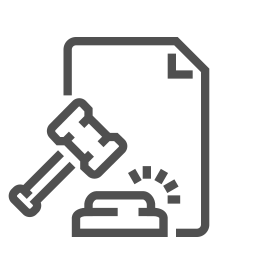Personal Injury Demand Letter
Many personal injury cases settle before trial. The best way to obtain a good settlement in your injury case is to communicate to the insurance company that you can present a well prepared and compelling case to a jury. The most effective way of doing this is through a well-prepared demand letter.
The demand letter is one way of telling the insurance company that 1) The terms of your proposed settlement and 2) To provide the insurance company with the evidence supporting your demand for compensation.
A demand letter can be put together in a variety of ways. For smaller cases involving minor injuries a demand in the form of a letter, with essential medical records and documents attached, may be sufficient. Where injuries are more severe, or the circumstances more complicated, the demand letter may take the form of a demand package or demand brochure.
A demand package may include extensive medical records and bills. It may also include statements from potential lay and expert witnesses on liability and damages. This would include opinions, statements and observations regarding injuries, future medical expense, rehabilitation needs, future lost income, vocational training or retraining and so on.
Regardless of the size of the case there are several things that should be included in every demand. Most demand letters will begin with a statement of the facts about the accident. This is a narrative statement setting forth how the accident happened and who caused the accident. In most cases a copy of the police or incident report if available should be included with the demand.
The next section of the demand letter, and often the most lengthy and detailed section, is a summary of the injuries sustained along with a detailed description of medical treatment. This should be a detailed outline of all medical treatment including emergency room visits, doctor visits, and rehabilitative therapy.
It is important to include all diagnoses obtained as well as the results from all medical tests performed. It is particularly important to include in the demand a statement from your doctor or other medical expert that you have either completely recovered from your injuries or have reached maximum medical improvement (MMI). You have reached MMI when your doctor determines that additional medical treatment will not improve your condition.
In your doctor’s or medical expert’s statement regarding maximum medical improvement he/she should also include whether future medical care will be necessary and the expected cost of such treatment. This section of your demand letter should also include evidence of damages, if any, for pain and suffering, loss of consortium, disfigurement, shortened life expectancy or other permanent and irreparable harm.
The next part of the demand letter is an itemization of lost earnings. This should include supporting documentation from your employer. If you are unable to return to work because of your injuries, or have to return to work in a different occupation due to your injuries, evidence from the appropriate experts should also be included to support these claims.
The final part of the demand letter is the actual demand for compensation. This should be a reasonable settlement demand based upon your injuries. It should not be exaggerated or embellished. Though there is often a tendency to do this, this can harm your claim in a number of ways. An attorney experienced in personal injury claims can advise you on the value of your case so that an appropriate demand is made in order to maximize both the possibility and value of settlement.

